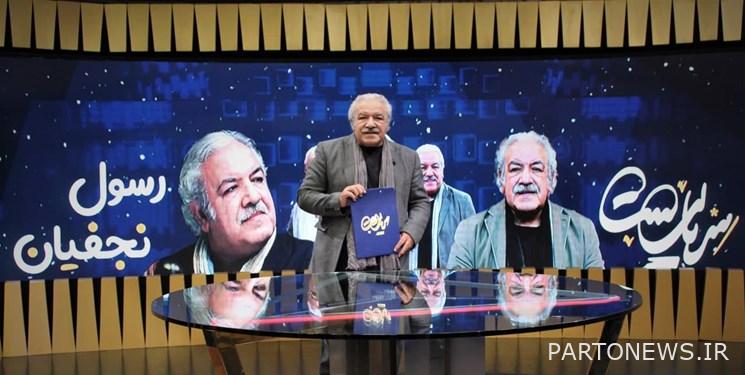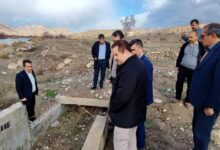The reason for the survival of “Rana” according to Rasoul Najafian / February 11, 1957 I was with Parviz Parastavi / The audience used to write letters to us

According to a Fars Radio and Television reporter, Rasoul Najafian was the guest of the “Serialist” nostalgia section performed by Pedram Karimi; The part dedicated to the series “Rana” directed by Davood Mirbagheri. In this series, which aired from 1989 to 1969, in addition to Rasoul Najafian, actors such as Behzad Farahani, Golchehreh Sajjadieh, Fatemeh Goodarzi, Parviz Parastavi, Saeed Nikpour, and the survivors of Hossein Panahi, Aziz Honaramouz, Mehri Vadadian, Mehri Mehrnia and Behri Mehrnia they did.
In response to Pedram Karimi’s question about the reason for the persistence and popularity of the “Rana” series, Najafian said: “This series aired in the late sixties and had a bold subject that had not been addressed in that way before.” A young girl and boy, who are cousins and daughters and played by me and Ms. Roya Teymourian, were to get married; My father (Behzad Farahani) is a businessman and has a different way of thinking and behaving from his sister’s family (Golchehreh Sajjadieh), and the same issues affect the lives of their children. The girl and the boy later realize that they are not patches of each other and despite their desire, they decide to separate.
He added: “Meanwhile, a new character named Rasoul Najafi (Parviz Parastavi) enters the story and a tension is created between him and Tahmineh (Roya Teymourian) which brings the story into a new challenge.” While the story of the series revolved around the clash of two social classes; I mean, my father was a businessman and his sister had different ideals and way of thinking, and of course I was against this character of my father. Well, this storyline was bold at the time and attracted a large audience.
The veteran actor also said about the similarity of the name of one of the main characters of the series (Rasoul Najafi) with his own name: I shared the initial idea of the series with Mr. Mirbagheri and he also named one of the characters played by Mr. Parviz Parastavi Rasoul Najafi . Parviz Parastavi and I were together for the first three days after the victory of the Revolution in February 1978, and we had many memories, some of which I shared with Mr. Mirbagheri and he was noticed. Later, I collaborated with him in several TV theaters, one of which eventually became the first bed of the series “Wolves”.
The film, theater and television actor said: “In those days, we saw a lot of feedback from the Rana series among the people.” I remember once in Shousha Square, a dear friend grabbed my collar and said seriously, “Why did you pass your fiancé so easily and why did you not meet him !?” I did not believe everything I said that Parviz Parastavi and I are friends and these are games.
Then, parts of the TV show “Bajnaqeh” with Rasoul Najafian and Akbar Abdi, Azadeh Pourmokhtar and Susan Maghsoudloo were broadcast. Najafian said about this work, which was produced in the mid-sixties: The artistic director of this tele-theater was Mr. Dariush Modabian, and its television director was Mr. Hossein Fredro. Behroozansab was also his author. We should also remember the late Hossein Mohebbahari who played a role in this. “Bajanagha” has a novel form, meaning that both the painting-based decor was used, and parts of it were photographed outdoors, and also had external sequences.
Najafian also said about his acquaintance with Davood Mirbagheri, the director of “Rana”: “In the early sixties, Hossein Panahi and I worked in tele-theater.” The late Panahi was a writer, and I also directed, and we did works like “Two Ducks in the Fog” and “The Elevator.” In the same unit of the organization, I met Mr. Mirbagheri. They said I was looking for an assistant for one of my jobs and I accepted and our friendship started from there. We worked together on several historical theaters, which eventually led to the series “Wolves” and “Rana”.
He also spoke about the difference between serialization in these days and in the past years: I sometimes hear people say that the situation in this field was better before and we have regressed and … this is not the case at all. Each period has technical advances compared to the previous one, and on the other hand, the minds of the director and the actors and the technical factors also change. We have made great strides over the years. Recording a tele-theater used to take a long time because the recording possibilities were more limited. We have now advanced both in technique and tools as well as in personal skills and creativity.
Najafian continued: “In any case, in the past, it was possible to make 10 series per year, for example, and two to three of them would have a large audience.” It is the same now.
He also spoke about how the audience reacted to the series in the sixties: “At that time, getting feedback from the audience was in the face of viewers in the streets or with letters that the audience sends to the organization.” A variety of letters came in, and the job of a few was just to read and collect the letters. This was the case until the late seventies, and I remember when I sang the song “Rasm Zamoneh”, after 48 hours, 35,000 letters reached the organization!
“Serialist”, produced by Mohammad Barikani and Mojtaba Faraji and performed by Pedram Karimi, is a work of the History, Culture and Art Group of Channel One, which airs every Thursday at 11:15 PM on Channel One.
End of message /
.

